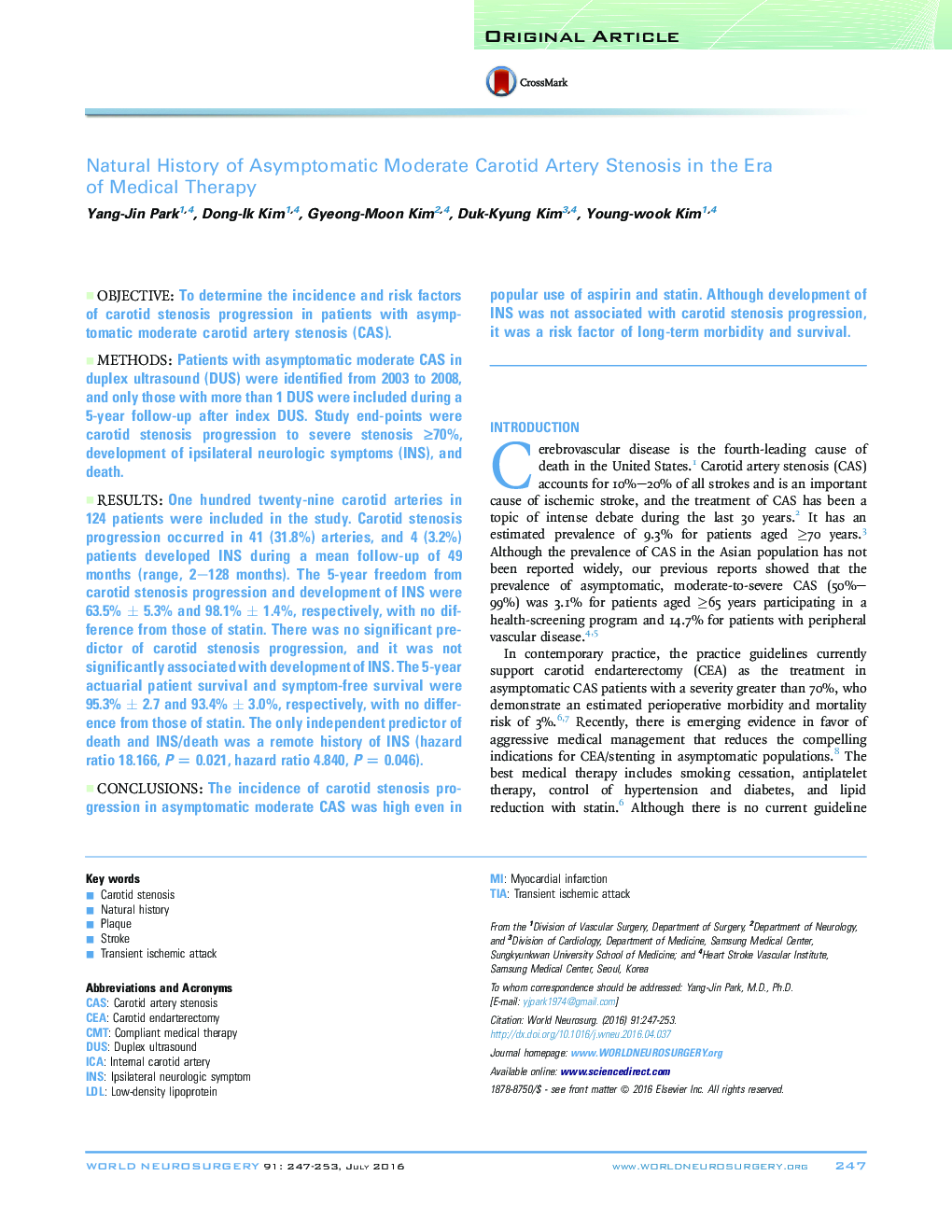| Article ID | Journal | Published Year | Pages | File Type |
|---|---|---|---|---|
| 3094548 | World Neurosurgery | 2016 | 7 Pages |
ObjectiveTo determine the incidence and risk factors of carotid stenosis progression in patients with asymptomatic moderate carotid artery stenosis (CAS).MethodsPatients with asymptomatic moderate CAS in duplex ultrasound (DUS) were identified from 2003 to 2008, and only those with more than 1 DUS were included during a 5-year follow-up after index DUS. Study end-points were carotid stenosis progression to severe stenosis ≥70%, development of ipsilateral neurologic symptoms (INS), and death.ResultsOne hundred twenty-nine carotid arteries in 124 patients were included in the study. Carotid stenosis progression occurred in 41 (31.8%) arteries, and 4 (3.2%) patients developed INS during a mean follow-up of 49 months (range, 2–128 months). The 5-year freedom from carotid stenosis progression and development of INS were 63.5% ± 5.3% and 98.1% ± 1.4%, respectively, with no difference from those of statin. There was no significant predictor of carotid stenosis progression, and it was not significantly associated with development of INS. The 5-year actuarial patient survival and symptom-free survival were 95.3% ± 2.7 and 93.4% ± 3.0%, respectively, with no difference from those of statin. The only independent predictor of death and INS/death was a remote history of INS (hazard ratio 18.166, P = 0.021, hazard ratio 4.840, P = 0.046).ConclusionsThe incidence of carotid stenosis progression in asymptomatic moderate CAS was high even in popular use of aspirin and statin. Although development of INS was not associated with carotid stenosis progression, it was a risk factor of long-term morbidity and survival.
